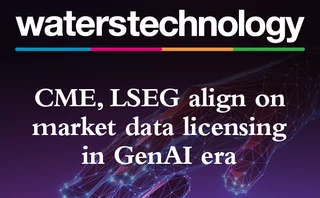Accelerating settlement

The imperative for settlement efficiency: Why now?
The move to shorter settlement cycles (SSC) in the US, Europe and other major markets has been accelerated by the experience of the global financial crisis. The SSC initiative will occur in Europe first through the CSD Regulation, with the US likely to follow. It is expected that this will drive some Asia-Pacific markets such as Australia and Japan to move from T+3 to T+2 or less.
Benefits of shorter settlement timetables
Regulators, policymakers and market participants recognize the benefits of SSC as reduced risk, lower operating costs and increased liquidity. And recent research from Omgeo shows that over 70 percent of survey respondents believe that SSCs are beneficial to the industry.
A reduction in counterparty risk was cited as the most important benefit of T+2, but there is also a strong business case for accelerating settlement: reducing the amount of time assets are tied up in the settlement process means participants can reinvest faster, as well as manage their capital more efficiently.
State of readiness
Despite the support for SSC, many middle and back offices are not currently prepared for a move to T+2, particularly in smaller and mid-sized firms. This lack of readiness could create compliance and operational issues that gain board level and regulatory attention.
Buy-side firms need to focus on getting the right mix of technology, processes and infrastructure in order to achieve SSC. According to research, timely receipt of trade details is considered to be the most important factor in achieving T+2, which makes the case for same day affirmation (SDA) as best practice. SDA is a process where trades are verified on trade date.
Omgeo continues to work with the industry to provide solutions that help market participants achieve SDA and SSC.
“Recent research from Omgeo shows that over 70 percent of survey respondents believe that SSCs are beneficial to the industry” Tony Freeman
Tony Freeman is global head of industry relations at Omgeo. Formed in 2001, Omgeo is jointly owned by the DTCC and Thomson Reuters.
Only users who have a paid subscription or are part of a corporate subscription are able to print or copy content.
To access these options, along with all other subscription benefits, please contact info@waterstechnology.com or view our subscription options here: https://subscriptions.waterstechnology.com/subscribe
You are currently unable to print this content. Please contact info@waterstechnology.com to find out more.
You are currently unable to copy this content. Please contact info@waterstechnology.com to find out more.
Copyright Infopro Digital Limited. All rights reserved.
As outlined in our terms and conditions, https://www.infopro-digital.com/terms-and-conditions/subscriptions/ (point 2.4), printing is limited to a single copy.
If you would like to purchase additional rights please email info@waterstechnology.com
Copyright Infopro Digital Limited. All rights reserved.
You may share this content using our article tools. As outlined in our terms and conditions, https://www.infopro-digital.com/terms-and-conditions/subscriptions/ (clause 2.4), an Authorised User may only make one copy of the materials for their own personal use. You must also comply with the restrictions in clause 2.5.
If you would like to purchase additional rights please email info@waterstechnology.com
More on Trading Tech
Will overnight trading in equity markets expand next year? It’s complicated.
The potential for expanded overnight trading in US equity markets sparked debate this year, whether people liked it or not.
WatersTechnology latest edition
Check out our latest edition, plus more than 13 years of our best content.
The total portfolio approach gains momentum: Building the right tech foundation for success
The rationale for the TPA, and the crucial role technology plays in enabling such an approach
Google, CME say they’ve proved cloud can support HFT—now what?
After demonstrating in September that ultra-low-latency trading can be facilitated in the cloud, the exchange and tech giant are hoping to see barriers to entry come down.
Institutional priorities in multi-asset investing
Private markets, broader exposures and the race for integration
BlackRock and AccessFintech partner, LSEG collabs with OpenAI, Apex launches Pisces service, and more
The Waters Cooler: CJC launches MDC service, Centreon secures Sixth Street investment, UK bond CT update, and more in this week’s news roundup.
TCB Data-Broadhead pairing highlights challenges of market data management
Waters Wrap: The vendors are hoping that blending TCB’s reporting infrastructure with Broadhead’s DLT-backed digital contract and auditing engine will be the cure for data rights management.
Robeco tests credit tool built in Bloomberg’s Python platform
This follows the asset manager’s participation in Bloomberg’s Code Crunch hackathon in Singapore, alongside other firms including LGT Investment Bank and university students.







